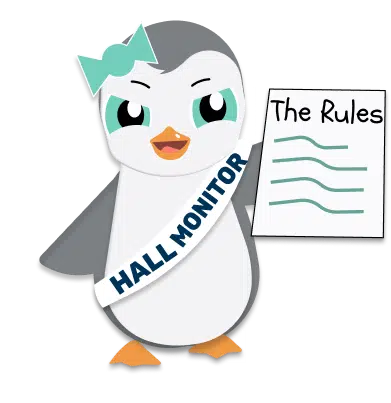Picture this: you’re at the store, and out of nowhere, your child starts yelling, crying, and waving their arms. Children with autism spectrum disorder face many challenges on a daily basis, including their struggle to communicate their needs, especially in times of distress and questioning how to calm an autistic child during a meltdown. It’s an autistic meltdown, and it feels like you’re on a wild rollercoaster ride with no way off. We’re here to help with this easy-to-follow guide on the do’s and don’ts of dealing with autistic meltdowns.
Table of Contents
What Are Autistic Meltdowns and Why Do They Happen?
Before we talk about the do’s and don’ts, let’s learn what autistic meltdowns are and why they happen. Autistic meltdowns are strong emotional outbursts that can be do to different things, like too much noise, changes in plans, or not getting what they need. They’re not just tantrums or bad behavior but a natural way for kids to react when they feel overwhelmed.
Goally | Visual Scheduler for Autism
Does your child struggle with getting ready in the morning independently? Goally’s routine app on the best tablet for kids breaks down large tasks into small, achievable steps for autistic kids. Create custom routines with your own videos & pictures for every step.
Some Common Triggers for Autistic Meltdowns Include:
- Sensory overload: Kids with thinking and learning differences can be more sensitive to things around them, making it easy for them to feel overwhelmed. Loud sounds, bright lights, or strong smells can cause meltdowns.
- Changes in plans: Neurodivergent kids often need routines to feel safe. When plans change suddenly, they can get upset and have a meltdown.
- Unmet needs: Being hungry, tired, or uncomfortable can also lead to meltdowns.
Understanding these triggers can help you better support your child during a meltdown and work on strategies to prevent them in the future.
The Do’s: How to Help Your Child During Autistic Meltdowns
Now that we know what autistic meltdowns are and why they happen let’s learn the best ways to help your child when they’re having a meltdown.
1. Keep Your Cool
Your child needs you to stay calm during a meltdown. Be sure to take deep breaths and try to keep as calm as you can. Remember, your child isn’t doing this on purpose; they need your help. By staying calm, you can better support your child and help them feel safe.
2. Find a Quiet Place
Look for a quiet, calm area where your child can feel safe. This could be a special “calm-down corner” at home or a quiet spot when you’re out. Turn down the lights and make the area as quiet as possible. Creating a safe space can help your child feel more comfortable and reduce stress.

3. Offer Comfort and Support
Say kind words and give gentle hugs or touches if your child is okay with it. Let them know you’re there for them and that they’re safe. You could say something like, “I’m here for you, and we’ll get through this together.” Offering comfort and support can help your child feel better and more secure during an autistic meltdown.
4. Show You Understand
Let your child know it’s okay to feel overwhelmed and that you understand how they feel. This can help them feel better and more supported. You might say, “I know this is hard for you, but we’ll get through it together.” Showing understanding can make a big difference in helping your child recover from an autistic meltdown.
5. Help Them Feel Better
After the autistic meltdown is over, please work with your child to find ways to help them feel better. This could be taking deep breaths, squeezing a stress ball, or doing a calming activity like coloring or listening to soft music. Helping your child find ways to cope with their emotions can make future meltdowns less intense and easier to manage.

Read more: How to Prevent an Autism Meltdown
The Don’ts: What to Avoid During Autistic Meltdowns
Knowing what to do during an autistic meltdown is important, but it’s also good to know what not to do. Here are some things to avoid.
1. Don’t Punish or Yell
Remember, autistic meltdowns aren’t on purpose or meant to be mean. Punishing or yelling at your child will only make things worse and make them feel more upset. Instead, focus on staying calm and offering support.
2. Don’t Make Them Talk
During an autistic meltdown, your child might have a hard time talking about their feelings. Please don’t make them talk or explain themselves. Instead, focus on helping them feel better. Once the meltdown is over, you can talk about what happened and how to prevent it in the future.
Read More: How to Use Autism Communication Strategies
3. Don’t Ask Too Many Questions
Asking a lot of questions can make your child feel more stressed. Keep your words simple and clear, and don’t ask too many questions about what’s wrong or why they’re upset. Focus on offering comfort and support instead.
4. Don’t Ignore Their Needs
If you think your child’s autistic meltdown is because they need something, like food or rest, take care of it as soon as you can. Ignoring their needs will only make the meltdown last longer and be harder for them to recover from. By addressing their needs, you can help your child feel better.
Getting Ready for the Future: Stopping Autistic Meltdowns Before They Start
You can’t stop every meltdown, but there are things you can do to help make them happen less often and less intense.
- Make routines: Having routines can help your child feel safe and make meltdowns less likely. Stick to a daily schedule and try to keep things consistent.
- Watch for triggers: Pay attention to what makes your child feel overwhelmed and try to avoid those things. By being aware of their triggers, you can help prevent meltdowns before they start.
- Teach ways to cope: Help your child learn healthy ways to deal with stress and strong emotions. Practice deep breathing, counting, or other calming techniques together.
By working on these strategies, you can help your child feel more in control of their autistic meltdowns and reduce the frequency and intensity of meltdowns.

Goally | Apps That Build Behavior & Life Skills for Kids
Want to keep your child motivated while building essential behavior and life skills? Goally’s skill-building tablet is designed to celebrate small wins and help your child grow.
Our Behavior Tracker helps you reward your kiddo for specific skills, like “being kind” or “flushing the toilet.”
By setting clear expectations and rewarding their efforts, you foster a positive environment for your child to flourish in their behavioral skills journey.

Closing: Becoming a Meltdown Pro
Dealing with autistic meltdowns can be tough, but with patience, understanding, and the right tips, you can help your child get through these hard times. Remember, you’re not alone, and with practice, you’ll become a meltdown pro, ready to help your child through even the biggest emotional waves. Keep learning, supporting, and growing together, and you’ll both be surfing those emotional waves like pros in no time!
FAQs About Autistic Meltdowns
How can visual schedules help manage autistic meltdowns? Visual schedules can help manage autistic meltdowns by providing a consistent routine that reduces uncertainty, thereby reducing anxiety and the potential for meltdowns.
What role do emotional regulation apps play in handling autistic meltdowns? Emotional regulation apps help individuals with autism identify, understand, and manage their emotions, thus providing a useful tool for preventing or mitigating meltdowns.
How can rewards help in managing autistic meltdowns? Rewards can positively reinforce desired behaviors and coping strategies, helping to reduce the frequency and intensity of autistic meltdowns.
How can parents help their child during an autistic meltdown? Parents can help during a meltdown by maintaining a calm demeanor, ensuring the child is safe, and giving them space to express their feelings until they regain control.
What long-term strategies can reduce the frequency of autistic meltdowns? Consistent routines, clear communication, a sensory-friendly environment, and the use of tools like visual schedules, emotional regulation apps, and reward systems can reduce the frequency of autistic meltdowns.
This post was originally published on April 13, 2023. It was updated on 12/12/2023.

Goally
We help parents teach their kids life skills, like doing bedtime and morning independently. Backed by science, we incorporate evidence-based practices and expert-informed designs in all of our apps and content.







